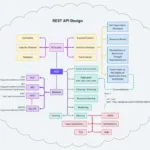Top 5 Career Paths in Data Science: Roles, Skills & How to Get Started
Data Science has evolved into one of the most dynamic and high-impact fields in the tech world. From solving business problems with analytics to pushing boundaries in artificial intelligence, there are multiple career directions one can take within this field. Whether you’re just starting out or considering a switch, here are the top 5 data science career paths worth exploring—along with what it takes to pursue them.
Data Analyst
Data Analysts transform raw data into meaningful insights that help companies make informed decisions. This role is ideal for those who enjoy working with numbers, visualizations, and business storytelling.
Skills & Tools Needed:
- Excel, SQL, Tableau, Power BI
- Python (Pandas, Matplotlib), basic statistics
- Strong communication and presentation skills
How to Get Started:
Begin with foundational courses in statistics and Excel. Learn SQL through interactive tutorials like Mode Analytics or SQLZoo. Tools like Power BI and Tableau have free versions for practice. Build small portfolio projects to demonstrate your ability to analyze and visualize data.
Machine Learning Engineer
ML Engineers build and optimize predictive models that power everything from recommendation engines to fraud detection systems. This path is technical and math-heavy, ideal for those who enjoy building intelligent systems.
Skills & Tools Needed:
- Python, Scikit-learn, TensorFlow, PyTorch
- Mathematics (linear algebra, calculus, probability)
- APIs, cloud computing, model deployment
How to Get Started:
Learn Python and dive into machine learning with free resources like Coursera (especially Andrew Ng’s ML course). Start building models on datasets from Kaggle and deploy them using Flask or Streamlit. GitHub your work to start building a portfolio.
Data Engineer
Data Engineers are the builders of the data world. They create the infrastructure and pipelines that ensure clean, accessible, and scalable data for analytics and machine learning.
Skills & Tools Needed:
- Python, SQL, Apache Spark, Hadoop, Airflow
- Cloud platforms like AWS, Google Cloud, Azure
- Data warehousing (Snowflake, Redshift, BigQuery)
How to Get Started:
Start by learning advanced SQL and data structures. Explore ETL tools and practice building simple data pipelines. Take cloud certification courses (AWS or GCP) and get hands-on with their free tiers. Try integrating real-world data from APIs or logs.
AI / Deep Learning Researcher
This role focuses on cutting-edge algorithms, neural networks, and deep learning models. It’s ideal for those who love academic research, experimentation, and innovation in artificial intelligence.
Skills & Tools Needed:
- PyTorch, TensorFlow, NumPy, OpenAI Gym
- Strong background in math and computer science
- Familiarity with AI research papers and model architectures
How to Get Started:
Take advanced courses like Stanford’s CS231n or fast.ai’s deep learning tracks. Read AI papers on arXiv and replicate experiments. Work on niche projects like GANs, transformers, or reinforcement learning environments to build credibility.
Business Intelligence (BI) Developer
BI Developers bridge the gap between data and decision-makers. They design dashboards and reporting tools that make data accessible to non-technical teams.
Skills & Tools Needed:
- Power BI, Tableau, Google Data Studio
- SQL, DAX, Excel
- Understanding of business KPIs and reporting strategies
How to Get Started:
Master one visualization tool (e.g., Power BI) and build dashboards using open datasets. Learn how to structure and present data to align with business goals. Microsoft Learn offers free training on Power BI and DAX.
Final Thoughts
Data science is not one-size-fits-all—it’s a vast landscape of opportunities, each with its own required skillset and tools. The key is to choose a path that aligns with your interests, strengths, and long-term goals. With the wealth of free resources available today, self-learning is more accessible than ever.
Start where you are. Learn by doing. Build your portfolio. And keep growing.





